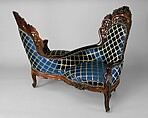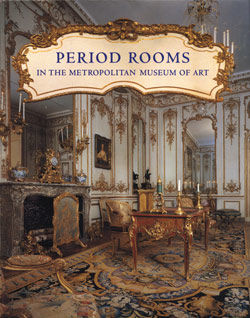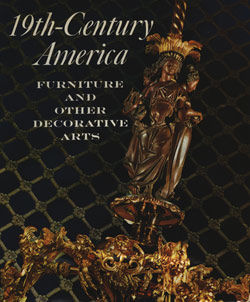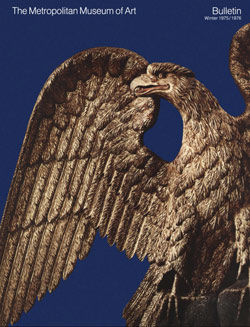Tête-à-tête
Attributed to John Henry Belter American
or attributed to J. H. Belter & Co.
J. H. Belter has been described as the most original of America's mid-nineteenth-century cabinetmakers. One of the many German-born craftsmen working in New York, he was in his time and remains today renowned for his laminated and carved Rococo Revival rosewood parlor and bedroom suites. Although the process of lamination was not new, Belter patented a method of steaming several layers of wood glued together in "cawls," or molds, resulting in furniture that was thin, strong, and curved in two planes and could subsequently be carved to a degree previously unimagined. The graceful, sinuous shape of this tête-à-tête illustrates the importance of lamination and epitomizes the Rococo Revival style. Popular in America between 1845 and 1865, furniture in this revival style was inspired by eighteenth-century French sources and is characterized by curved, cabriole legs, strong C- and S-curves and scrolls, and the extravagant use of carved, naturalistic ornament, particularly flowers. The Rococo Revival style was popular for the decoration of formal parlors, or reception rooms, and this tête-à-tête belongs to a set of parlor seating furniture which includes a settee, two armchairs, and two side chairs, all of which are on display in The Richard and Gloria Manney John Henry Belter Rococo Revival Parlor at The Metropolitan Museum of Art. A mid-nineteenth-century French form, the tête-à-tête, also known as a confident, was well-suited to the parlor as its two chairs facing in opposite directions and joined at the sides allowed for discreet conversation. Belter chose imported rosewood for his parlor and bedroom suites because of its luxurious qualities: the rich color, fine-patterned grain, and high polish that could be attained.
Due to rights restrictions, this image cannot be enlarged, viewed at full screen, or downloaded.







